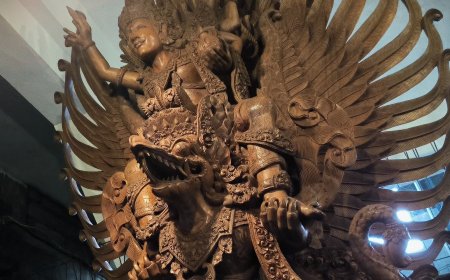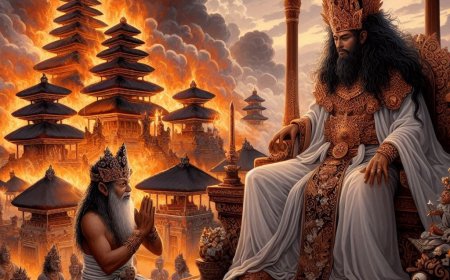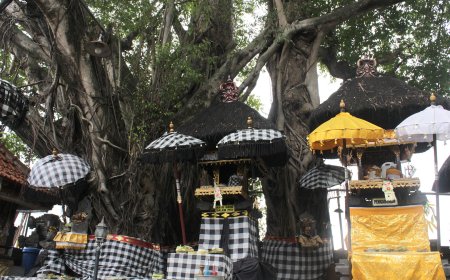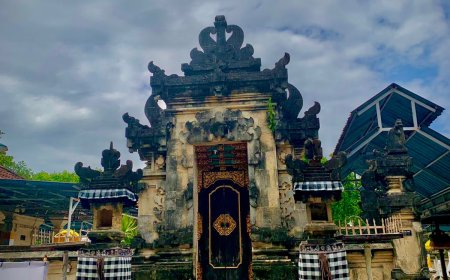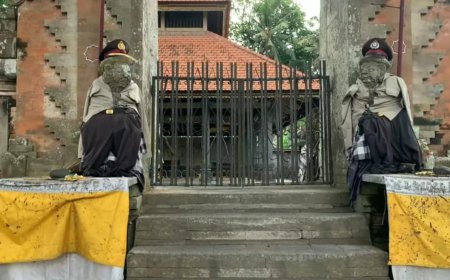Pura Luhur Puncak Tedung: Traits Of Dang Hyang Nirartha's Tedung
Places of worship for the Hindu community in Bali, known as Pura, can be distinguished based on their types. One type of Pura found in Bali is Dang Kahyangan Jagat, which serves as a sacred place established to honor the great sage who engaged in tapa yoga and meditation at that location. Pura Dang Kahyangan Jagat closely associated with the journey of Dang Hyang Nirartha in the Sulangai Traditional Village is Pura Luhur Puncak Tedung.
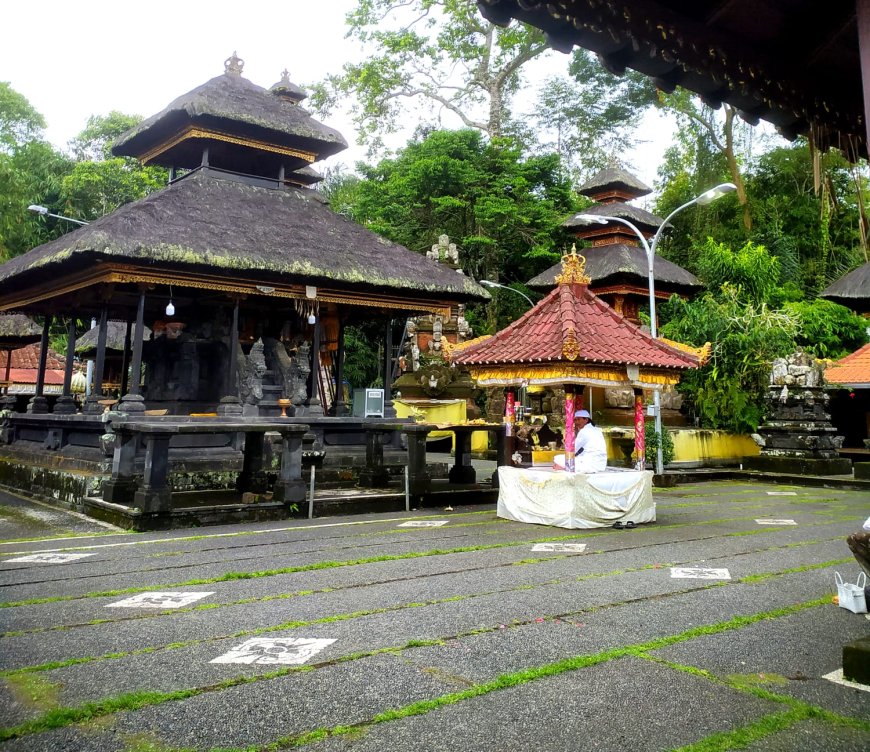
The Sulangai Traditional Village in North Badung is a hidden paradise nestled in the hills, offering captivating natural beauty. With a backdrop of enchanting green rice fields, lush hills, and charming distant mountains, this village provides an unforgettable experience for anyone who visits. However, the uniqueness of this village is not only found in its natural charm but is also renowned for the presence of sacred temples. Pura Luhur Puncak Tedung, known as a place of worship for Hindus, serves as a spiritual center radiating tranquility and grandeur. Many Hindu devotees come to this temple for prayers and to seek spiritual peace.
Every temple in Bali has its own distinctive features and history, and Pura Luhur Puncak Tedung is no exception. Situated in the Sulangai Traditional Village, Petang District, Badung Regency, this temple is one of the places of worship for devotees or Hindus in Bali to perform their prayers. The journey to reach the temple is approximately 30 km and takes about 1.5 - 2 hours from Denpasar heading north.
The history of Pura Puncak Tedung is closely tied to the meaning of its name, which consists of "puncak" (peak) and "tedung" (a type of umbrella). "Puncak" refers to the highest point of a highland, and "tedung" is a kind of umbrella. The existence of this temple is associated with the role of the renowned priest, Dang Hyang Nirartha, or Bhatara Sakti Wawu Rauh. He journeyed from the Pulaki region towards the eastern part of Bali. During his journey, he rested at the highest point of a highland, and in Bali, such a highland's edge is often referred to as "puncak" (peak). As he continued his journey, the umbrella (tedung) he carried was left behind at that peak. Hence, the area became known as Puncak Tedung, and the temple he built there is named Pura Puncak Tedung.
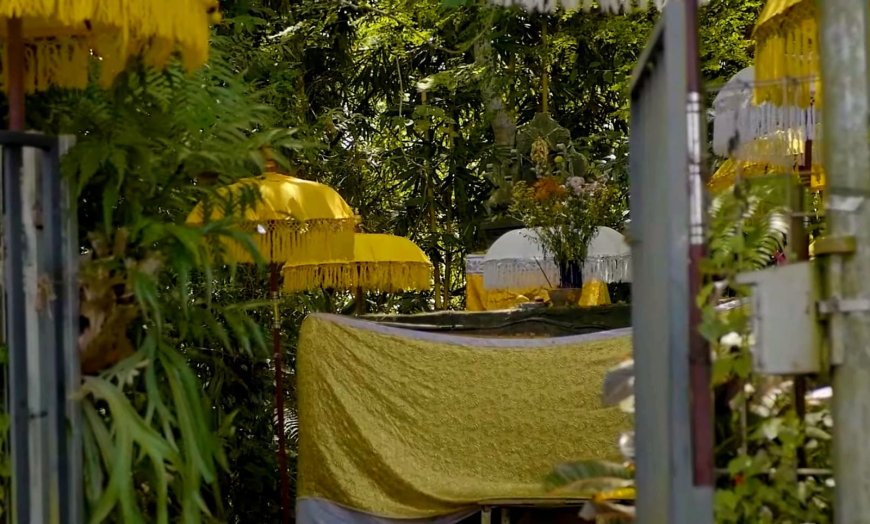
Tedung in Puncak Tedung Temple (Source: Personal Collection)
In addition to the legacy of the tedung, there is also a living Kemuning tree, which is believed to be the staff of Dang Hyang Nirartha. The Jro Mangku of Pura Puncak Tedung mentioned that while there are many Kemuning trees in the forest, one particular Kemuning tree grows in the temple's holiest shrine. This tree is considered a significant marker, believed to be associated with Dang Hyang Nirartha. Beneath the Kemuning tree, there is a statue of the priest accompanied by two guards on each side. The Kemuning tree, which currently stands at a height of about five meters, is believed to embody the staff of Dang Hyang Nirartha.
In addition to the presence of Dang Hyang Nirartha, Pura Luhur Puncak Tedung also bears the traces of Mpu Kuturan, who traveled extensively, including in Bali. The legacy of Mpu Kuturan in this temple includes several stones believed to be lingga yoni. These lingga yoni structures are placed in a special shrine within the compound of Pura Luhur Puncak Tedung.
After Dang Hyang Nirartha consecrated the shrine at Puncak Tedung, he performed Surya Sewana (worship to the Sun God) at Puncak Pegametan, located to the north of Pura Puncak Tedung. Following this, he headed west of Pura Puncak Tedung and engaged in meditation. This location is now known as Munduk Saab. Upon leaving Munduk Saab, he proceeded towards the south of Pura Puncak Tedung, which is now named Pura Puncak Gunung Lebah.

Dang Hyang Nirartha Statue (Source: Personal Collection)
To honor the contributions of Dang Hyang Nirartha, the Palinggih Meru Atap 3 (Tumpang Tiga) was erected. During a journey towards Puncak Pangelengan (Tinggan) for meditation, a descendant of the Mengwi Kingdom also took a rest at Pura Puncak Tedung. At his command, a Meru Tumpang 7 was constructed. This Meru Tumpang 7 serves as a representation of Pura Puncak Beratan. With the establishment of Meru Tumpang 7, the people in Petang and its surrounding areas no longer need to directly visit Pura Puncak Beratan to seek prosperity for their rice fields, they can accomplish this through Pura Puncak Tedung.
During the peak of the Mengwi Kingdom in the 17th century, when it extended its control to the northern part of Badung, the oversight and maintenance of Pura Puncak Tedung were entrusted to Puri Carangsari. Puri Carangsari then delegated this responsibility to Puri (Jeroan) Kerta for supervision and upkeep. In the 17th century, Puri Carangsari expanded its territory, and one of its descendants named I Gusti Ngurah Rai moved to the village of Petang and settled there. As Puri Kerta Putung did not have a continued lineage, the oversight and maintenance of Pura Puncak Tedung were transferred to Puri Petang, which was a breakaway from Puri Carangsari. With the establishment of I Gusti Ngurah Rai in the village of Petang, the region was divided into traditional villages known as Desa Adat, and he became the custodian of Pura Puncak Tedung. The mentioned traditional villages include Desa Adat Sulangai, Desa Adat Munduk Damping, Desa Adat Lipah, Desa Adat Sandakan, Desa Adat Angantiga, Desa Adat Batulantang, Desa Adat Kerta, and Desa Adat Petang.
The piodalan ceremony at Pura Puncak Tedung is conducted every six months based on the wuku calculation, specifically on every Saturday Kliwon of Wuku Krulut or Tumpek Krulut. During the piodalan ceremony, the sacred shrines of Ida Bhatara are carried to undergo mekiyis or melasti to Pura Beji. After returning from Pura Beji, these shrines temporarily stop (mesandekan) at Pura Sekar Taji. The purpose of mesandekan is similar to someone who has just taken a bath – they must tidy up or arrange their clothing before entering the house.
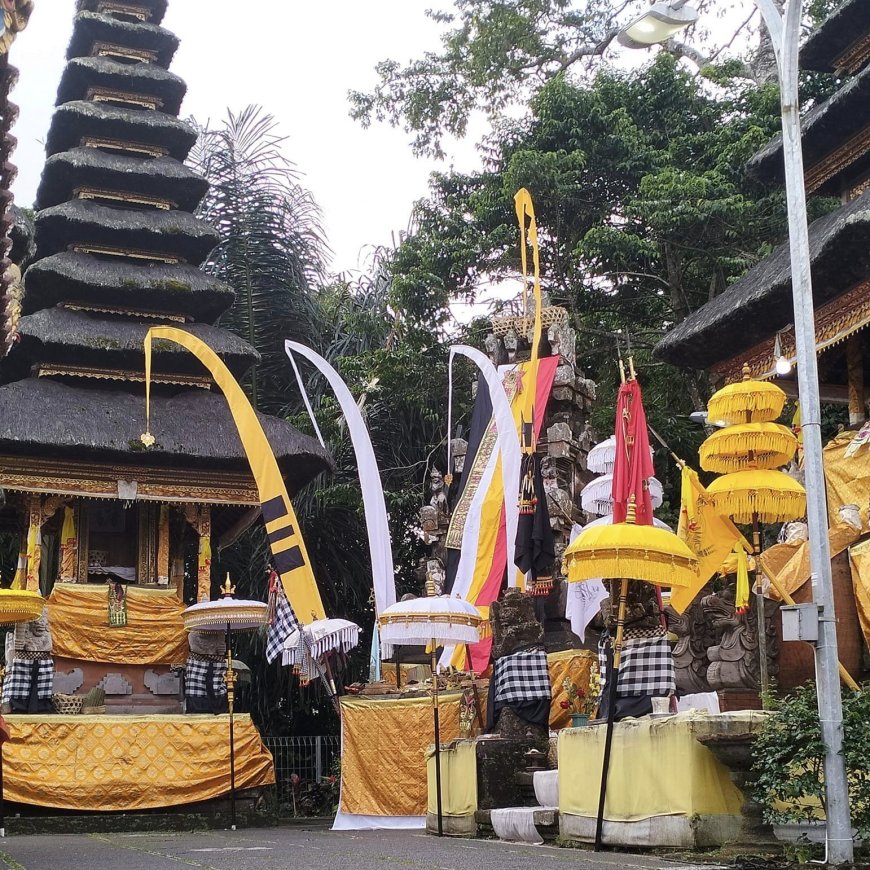
Piodalan Ceremony at Puncak Tedung Temple (Source: Personal Collection)
During the piodalan ceremony, devotees or Hindu worshipers gather in large numbers to perform prayers at Pura Puncak Tedung. This isn't limited to the local community of Desa Adat Sulangai and its vicinity, devotees from all over Bali often come to worship at this temple. In addition to the piodalan ceremony, prayers are also commonly conducted at the temple during the Saraswati Day celebration. Devotees can also perform prayers outside of the piodalan schedule by contacting the phone number of the temple's Pemangku.
As an invaluable ancestral heritage, visiting the Sulangai Traditional Village and Pura Luhur Puncak Tedung will not only create beautiful memories but also provide an opportunity to immerse oneself in the rich and profound cultural heritage that must be preserved. This village is a blend of natural beauty, deep history, and profound spirituality. It is a journey that not only captivates the eyes but also the soul, awakening admiration for the majestic cultural richness of Bali that is meticulously preserved in the village of Sulangai.





































